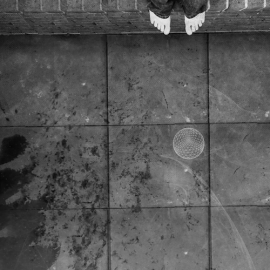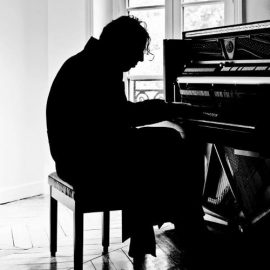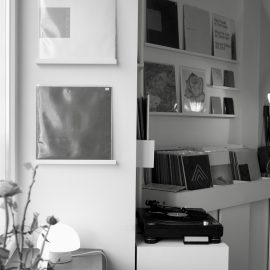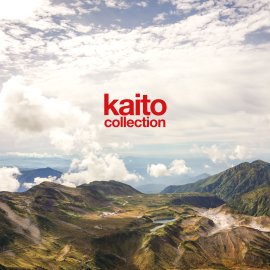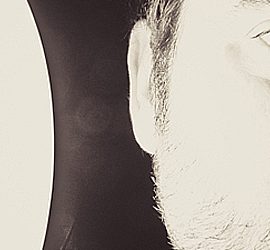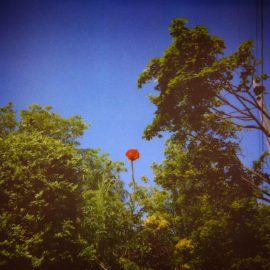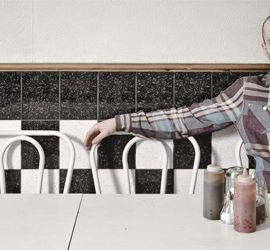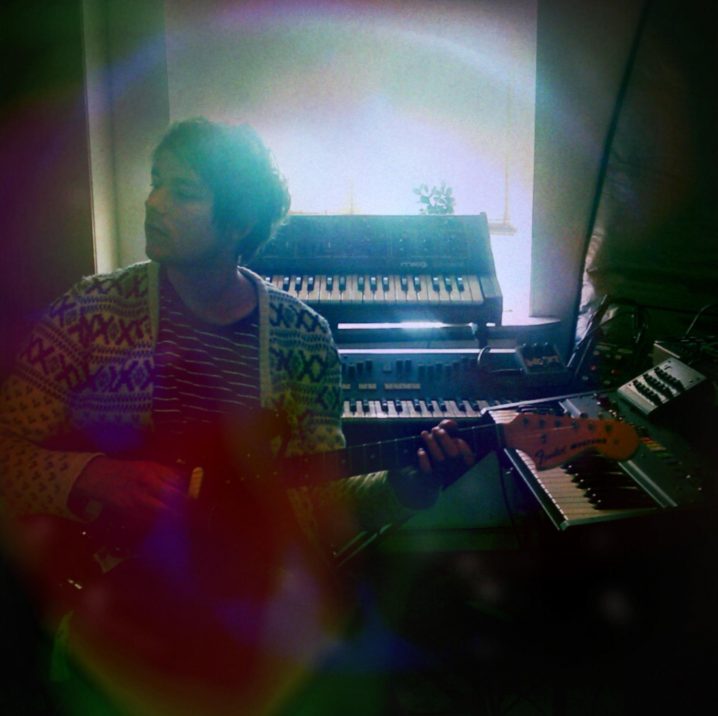
Hey Jonas, thanks for taking some time out of your Summer to answer some questions, has it been a good one so far?
Oh yes. It hasn’t been the most productive summer so far, but I’ve been spending a lot of time with my family and stuff, which is always nice.
To me Summer is the perfect season to listen to your music and all its Balearic atmospheres; do you personally draw a lot of inspiration from this time of year and find yourself reflecting it in your music?
Absolutely. The light, the warmth, spending time outside, travelling… that’s all definitely being channeled into my music. Here in Denmark the four seasons are really distinct from each other, so when winter finally turns to spring and the world awakens anew there’s always this kinda existential force to it, it feels truly mesmerizing. Ironically I’m never doing much work in summer compared to other seasons, cause creating music is, for me, a lot about discipline, solitude, work and summer is often quite the opposite.
From the thick, shoegazing heights of “Azure Vista” to the serene ambience of “Confluence” you’ve established a lot of diversity in your back catalogue, do you ever worry about maintaining or losing sight of your particular “brand” or “style” of sound? Do you think you even have a distinct sonic style?
It’s weird, it seems that most people throughout the last 10 years have accused me for the opposite: for doing the same record over and over – propably due to the simple fact that there’s a clear line throughout the Manual artwork. But to me that’s a really lazy dismissal, cause indeed the span is quite wide. I sort of gave up on having one certain style a long time ago. I’ve been involved in so much music by now, also stuff that’s even further apart stylistically than the albums you’re mentioning here. But I think as the years progress the personal “Jonas Munk traits” will start revealing themselves across the different genres: certain harmonic tendencies, specific ways of creating progression in a composition, a general way of putting sounds together, a certain ”warmth”. Sometimes I really work hard trying not to sound me – not to use that chord again, or that compositional structure again. I think there’s quite a nice balance of homogeneity and variety throughout the Manual catalog, and I’m proud of that. When I decided to release the three ambient albums (The North Shore, Bajamar and Confluence) under the Manual moniker it’s because I feel they’re connected somehow, through that atmosphere.
Tell us a little about your latest record “Absorb/Fabric/Cascade” on El Paraiso for people who perhaps haven’t listened to it yet, it’s quite drone-y and surprisingly synth-led compared to your other works isn’t it?
For me the releases on El Paraiso Records released under my birth name [ed. Jonas Munk] are completely different from the line of Manual albums. There are a few overlaps here and there but generally I don’t regard them as a continuation of the Manual records at all. The way I see it the Manual albums are about compositions, about detail, melody and harmony. The two records I’ve released under my name are more raw, earthy and organic in nature. They’re more about sound, less about compositions. More about impulse and flow, less about structure and nuance. The latest one especially, Absorb/Fabric/Cascade, is really meant to be these streams of sound one can dive into – just step in and flow with the current of sound. It’s really simple actually. A lot of it goes back to the minimalists, some aspects of the avant-garde and early electronic music. I wanted the sound to have more of a physical aspect, to be really tactile – and just let the sounds and patterns be sensual phenomenons. There can be beauty in really simple patterns intertwining, continuously weaving together in new ways. That was the whole idea. Both albums were really refreshing to do, and it allowed me to incorporate some elements from krautrock, psychedelic rock and avant-garde in a way I was never really able to do on the Manual albums. The tracks don’t have that sense of direction that the Manual records all have – they are more open-ended. And they were done rather quickly, whereas a Manual track takes ages to produce.
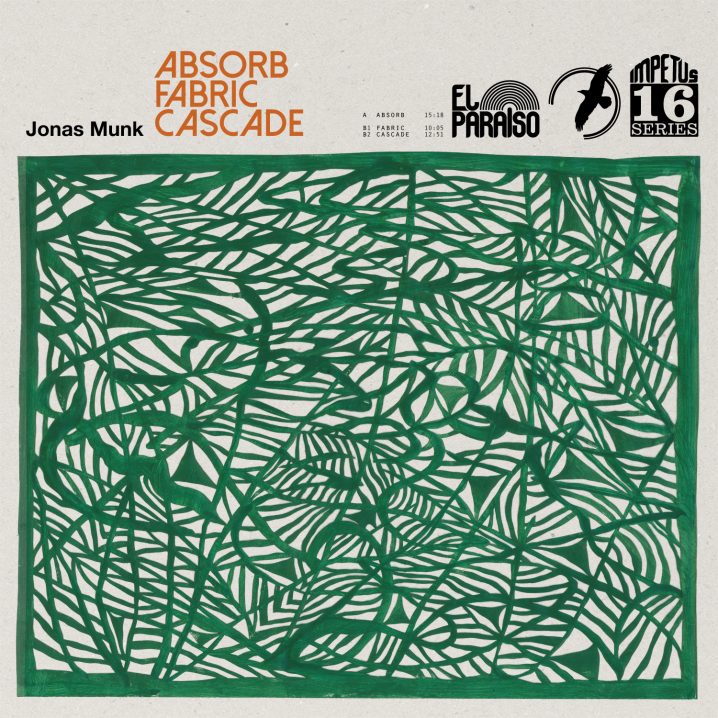
You’ve said in previous interviews that you listen to a lot of music but find it increasingly less influential on your own creations, does this explain the trend to more experimental/progressive electronic music in your recent albums?
I think it’s always a good exercise to try and move yourself further and further away from the stuff one loves and finds inspiration in. My best work has definitely happened when I’ve managed to stray my own path without any specific sound in mind, and some of the worst when I’ve been pulled too strongly towards a specific style or artist. It’s something I’m slowly getting better at. I can still easily pick out two or three artists each of my early tracks were imitating, whereas the later work feels much more like a natural, ingrained concoction of hundreds of different sources and ideas.
On a related note, how much have you come to rely on software in recent years as a result of this more electronic style? You were a big advocate of analogue synths and hardware-led construction, has this changed through time?
To be honest I was probably just trying to defend a certain way of working since that was the only method available to me at the time. Everyone else was doing it with computers at the time, so maybe it felt right to point out that I was doing things differently, even though it really wasn’t a matter of deliberate choice. Actually I’m in no way a purist when it comes to working methods. Since around 2004 everything I’ve done has been some sort of hybrid between analog and digital, between hardware and software. Recent albums like ”Drowned in Light” or ”Awash” are obviously super heavy on analog synths – for some years I had been working predominantly with lots of software and the urge to engulf everything in as much analog as possible was stronger than ever, so those albums has a lot of what I would describe as ”analog character”. But everyone has a different idea of what ‘analog’ sounds like: to some people it’s a way of describing something that’s very raw, lo-fi and retro in nature, whereas for other people it’s about depth, richness and class. I’ve been using some of my analog synths for 15 years now, like my Junos and the Poly 800, and I love my collection of 1970s and 1980s ensemble synthesizers – they are full of character and fun to work with. Some of those machines sound really quirky in a way that wasn’t heard often until recently again. They inspire me to do a lot of tweaking, and since they’re hardware, I’m often tempted to combine them with stomp boxes, filter modules, amps and other analog modulation, stuff like that. It inspires me to grab things and turn some knobs. But there’s an incredible amount of amazing software synthesizers these days and the way you can interact with them in detail and the amount of control available is amazing. In regard to the analog sound being ”richer” and stuff like that, 90% of what you hear is total bullshit (like the vinyl vs digital debate), but what I really like about a lot of hardware is how you interact with it hands on, it’s inspiring. What I love about software is how quickly you can go give life to an idea and the way it’s so limitless. I couldn’t live without Cubase, that’s for sure.
Your debut LP “Until Tomorrow” is one of my all time favorites; could you please tell us a bit about its inspiration and perhaps give an insight into its little conceptual arc from your standpoint?
Wow, thanks. It fills me with warmth looking back on those days, because there was a direct connection between the stuff I listened to, the music I created, what the press and taste-makers liked and what listeners wanted. It was like I was part of the zeitgeist, everything was aligned for a brief moment. Shortly after that I started drifting out of tune with everything, and it has stayed that way ever since.
Looking back on the naïve, immature person I was back then I think the album holds up surprisingly well today. Like I said earlier, I can easily identify where the inspiration for each track comes from – like the track ”Lunate” for example: the first half is totally Aphex Twin, the latter half Gastr Del Sol – and I think that’s characteristic of an artist who’s still learning, not yet able to distill inspiration into a coherent, personal flow of sound. But I’m really proud of the record anyway, cause even though it’s kinda derivative and the production is super awkward sounding in places, each track is build on a really strong compositional idea. Back then everyone doing this kind of music were relying on repetitions, I wanted to break out of that – that’s kind of been the main conceptual motivation for every single Manual album – and explore structure and harmonic and dynamic progression. And I think I really did succeed, every single track on that album goes in surprising ways, there’s some interesting dynamic changes going on, and some interesting chord changes throughout each song.
I listened to some of the outtakes recently and the difference in quality compared to the material that ended up on the album is quite immense – a lot of that material was indeed embarrassing to listen to – which, to me, also suggests that a bit of luck was involved with the tracks that ended up on the album. I remember feeling that tracks such as Velvet Sunset, Tomorrow, Fortnights and It’ll Be Fine just kinda took a life of their own, as if the sum of the parts added up to more than the individual parts, moving beyond my scope. It’s always really hard to predict how to make that happen.

Back then I had a really simple, limited production setup: a couple of analog synths, a Roland sound module from the 1980s, a sampler (towards the end of the creation of Until Tomorrow), a couple of hardware sequencers and a couple of effects units. And the funny thing – and this is something I hear a lot from other artists looking back on their early days as well – is that the limitations of the early setup actually forced a lot of creativity. I had eight tracks to deal with, I could only sequence a couple of parts at a time, and since I wanted the sounds I was hearing on records by Tortoise, To Rococo Rot and Autechre I was tweaking the hell out of the gear I had. It never felt satisfying, cause it wouldn’t take me all the way (I didn’t have the skills either), but listening to it now the results are at least pretty damn unique sounding. A lot of those IDM-like sounds on the record actually comes from a Roland D-110 – a cheap sound module that was never meant for heavy tweaking or the kind of sounds that I wanted, but it actually was a really powerful, if unnecessarily complex, synthesizer once programming it in depth. Like, it had a synth engine as well as some preloaded samples and you could pitch-bend two octaves either way and the sounds would get real grainy and stuff like that. It had some very complex envelopes and layering possibilities. I don’t think anyone else has ever gotten the sounds out of that machine that I got back then. Same goes for my Yamaha R100 – I really abused that box, sampling and resampling the sounds, running things backwards… etc
So that’s something I still try to keep in mind: that sometimes it makes sense to set up limitations for oneself, one way or another, and that one should sometimes try to resist the easiest, most logical way of doing things. So even with all the possibilities of a digital work station it can be really fruitful for example to try and create something entirely with one synthesizer and a couple of effects modules.
Lastly, your previous release as Manual, “Awash”, came out in 2012; can we expect any future records under the alias and what kind of direction do you see it going in next time?
It’s always risky to assert something definitive but at the moment it feels very unlikely I’ll be doing more Manual releases ever. Interest in the project from the outside, as well as sales, has been on a decline for years and there’s hardly anything left anymore. I worked on Awash for three years, and I consider it one of the finest things I’ve ever done, but people didn’t respond to it. It’s so weird these days, so few people are interested in this kind of music, and it seems like the ones who still are don’t give a damn about the quality of it. On the one hand I’ve always held some kind of honor in staying true to an idea in spite of a complete lack of popularity or any kind of reward from the outside (actually, I often consider uncoolness a sign of artistic quality in regard to other’s work), but on the other hand, it just doesn’t make sense to me anymore. You know, I’ve got a family now. It doesn’t make sense to be holed up in the studio for three days working on a synth-pattern for a track, or something as simple as a good hi-hat pattern or something, if it doesn’t do anything for anybody in the end.
I was starting to feel bitter about the project cause I did some of my absolutely best work in the last 5-6 years – I consider tracks such as Saudade, Miraparque, Blood Run, Swim, Empty Inside and Glide to reach the absolute high-point of my capabilities. But people didn’t feel it. So now is probably a good time to move on. I feel the entire Manual catalog is a very nice entity in itself by now. When I compiled Memory and Matter (released last fall) it felt like nice way to round things off. I hope new people will be getting into the Manual albums in the future cause I strongly believe they’re a valid contribution to electronic music and they will stand the test of time for sure.
But it doesn’t mean I won’t be doing music like this ever again. I’m currently working with Ulrich Schnauss on a new set of tracks. We’ve been working since spring 2014 and it looks like we’ll have something finished by the end of this year. I’m also well over halfway through an album with Jason Kolb (of the band Auburn Lull) on a follow-up to the Billow Observatory album we released in 2013. None of those projects are a million miles away from the Manual stuff.
Questions by Chris Doherty-Ingram
Additional editorial by HC
